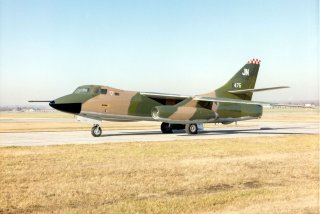Meet the Douglas B-66 Destroyer: A Tactical Light Bomber and Recon Aircraft
How well did it perform?
Before the U.S. military had satellites or unmanned aerial vehicles (UAVs) such as the RQ-4 Global Hawk surveillance drone to keep an eye on its adversaries, it relied on aircraft such as the Douglas B-66 Destroyer. The Cold War-era aircraft had been designed for use with the U.S. Air Force as a light bomber, and it was heavily based on the U.S. Navy’s A-3 Skywarrior, a heavy carrier-based attack aircraft.
Known as the “Whale,” the A-3 was the largest combat aircraft to regularly operate from a carrier deck. It was also developed as a nuclear strategic bomber and undertook reconnaissance and electronic warfare roles.
The Air Force clearly liked what they saw in the Skywarrior and sought to replace the aging A-26 Invader with a new aircraft that could serve as a land-based light tactical bomber. As the Air Force believed that the conversion from a carrier-based bomber would just involve removing the carrier-specific features no prototypes were ordered, and instead it acquired five pre-production models to determine how the aircraft could be best used. However, as the Air Force determined it would be used for low-level operations instead of high-altitude nuclear strikes, the aircraft “evolved.”
This included changing out the A-3’s J57 turbojet engines for two Allison J71s. The engines provided 10,200 lbs. of thrust reach, which gave the aircraft a maximum speed of 585 mph and a cruise speed of 525 mph. It had a range of 1,800 miles and a ceiling of 43,000 feet. It was armed with two 20mm cannons in the tail, while the internal bomb bay allowed for up to 15,000 lbs. of conventional drop ordnance to be carried. Notably the B-66 was equipped with ejection seats, a feature not found in the A-3.
The Air Force’s new light bomber was introduced in 1956 and a total of 294 were produced in various configurations. Despite having the ominous moniker “Destroyer,” the first production series—which totaled 145 of the aircraft built—was the RB-66B photo reconnaissance version with an operating flight crew of three. It took part in reconnaissance sorties during the Cuban Missile Crisis and the Vietnam War.
The B-model subsequently formed the basis of the RB-66C, an Electronic Counter Measures (ECM) model, which added specialized missions equipment and an added four additional crew members operating in a new work area where the internal bomb bay had been placed. A total of thirty-six aircraft in this version were produced.
The Air Force also developed a weather reconnaissance version, which operated with a crew of five, but it was the ECM B-66s that played a crucial role in strikes against North Vietnamese forces. The aircraft would detect enemy radar emissions and provided valuable data on enemy positions. The aircraft would even jam their signals, thereby confusing enemy defenses. Some B-66s were also used in pathfinder missions, guiding F-105 and F-4 bombing strikes through bad weather.
The last of the B-66s were retired in 1975, and while it may it not have been a true destroyer of enemy positions, it certainly paved the way for the other aircraft and helped get the job done.
Peter Suciu is a Michigan-based writer who has contributed to more than four dozen magazines, newspapers and websites. He is the author of several books on military headgear including A Gallery of Military Headdress, which is available on Amazon.com.
Image: Wikimedia

